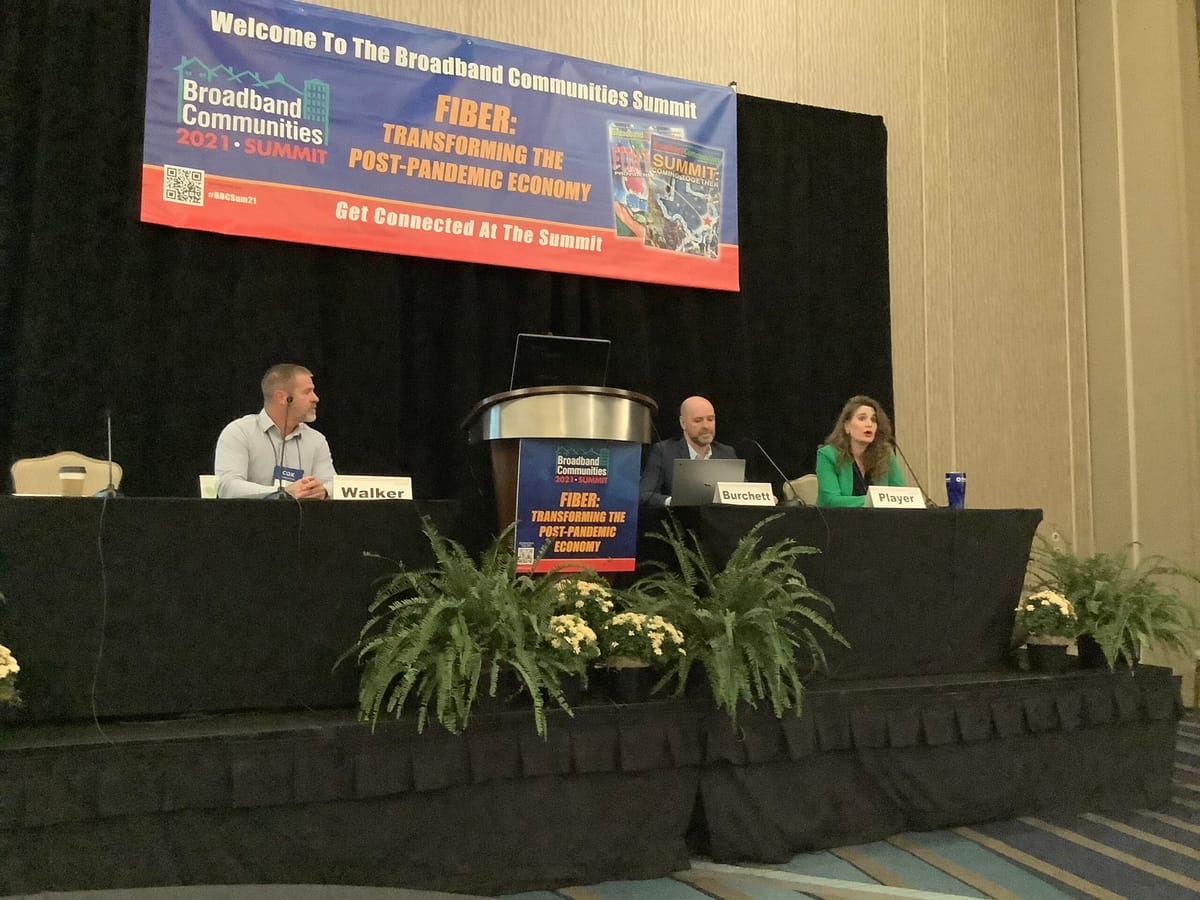Broadband Panelists Say Public-Private Partnerships Provide Unique Solutions for Regional Needs
Some experts believe that public-private models may provide answers for municipalities struggling to narrow the digital divide.
Benjamin Kahn

HOUSTON, October 1, 2021 – Public-private partnerships are an effective model to build out and improve broadband infrastructure, experts said on Wednesday at the Broadband Communities Summit here, and can be rewarding for all stakeholders involved.
Expedient, affordable partnerships that seek to serve the underserved are a winning combination, said Mary Ellen Player, vice president of market management for Consolidated Communications. She is the former colleague of her fellow panelist at Google Fiber, Director of Public Policy and Government Relations John Burchett.
In Burchett’s view, public-private relationships offer opportunities for two entities—a municipal community and a private company—to leverage the strengths of the other. While the cost of capital is often less of an obstacle for a private entity, they may not understand the precise needs of the area they are serving.
Additionally, private parties may not understand or have access to the rights of way in which to install their broadband equipment. Conversely, while the cost of capital may be a significant barrier to entry for a municipal entity, such entities will likely have a better idea of and a deeper appreciation for the community’s unique needs.
That item represents a distinct advantage for private-public partnerships, “Public entities get to dictate some of the terms of how their needs are met,” Burchett said.
“If you are a community that is part urban, part rural—or maybe you have some areas that are just really hard to get to—private efforts will take forever to get there because it may not make economic sense.” Burchett explained that this is where a public-private partnership can step in to bring another provider into the region to build out to those underserved areas and present a viable, competitive, alternative to the incumbent provider.
Trade offs to public-private partnerships
While generally supportive of public-private partnerships, SiFi Networks CEO Ben Bawtree-Jobson pointed out that there are trade-offs to the model. For example, those working as part of a public-private partnership effort may be entitled to a prevailing wage that they may not otherwise have if they were working as part of a strictly private effort.
As a result, the overhead costs of a project may increase. “It’s a balancing act,” Bawtree-Jobson said, “But there are huge advantages if you can make these projects work.”
Bawtree-Jobson identified timelines, the cost of capital, and the confidence in that capital as the most pressing issues entities should consider when determining whether a private-public relationship is right for them.
Despite many of the benefits of public-private models offer, some states have pursued initiatives to ensure they are not successful, in some cases going so far as having the model outlawed, “Incumbents have been able to put poison pills in bill after bill,” Burchett said. He said that these “poison pills” have been successful in predominantly red states, thanks in part to initiatives led by the American Legislative Exchange Council.
Burchett said that despite this, many of these efforts have been whittled down over the years, “[Attitudes] went from ‘I am philosophically opposed to government competing with the private sector,’ to ‘we just need [broadband to be] better.’”
In conclusion, all three panelists agreed that regardless of their model, broadband entities need to take advantage of this era of unprecedented funding, “Funding is not an issue today,” Player said, “The appetite [for broadband] is there.”
“I cannot imagine a more exciting time to be in this industry,” Burchett added.
This funding, however, hung in the balance as Democrats and Republicans only narrowly averted a government shutdown on Thursday, September 30, the final day of the government’s fiscal year. On Thursday night Congress passed, and President Biden signed, a measure extending the budget deadline until early December.










Member discussion